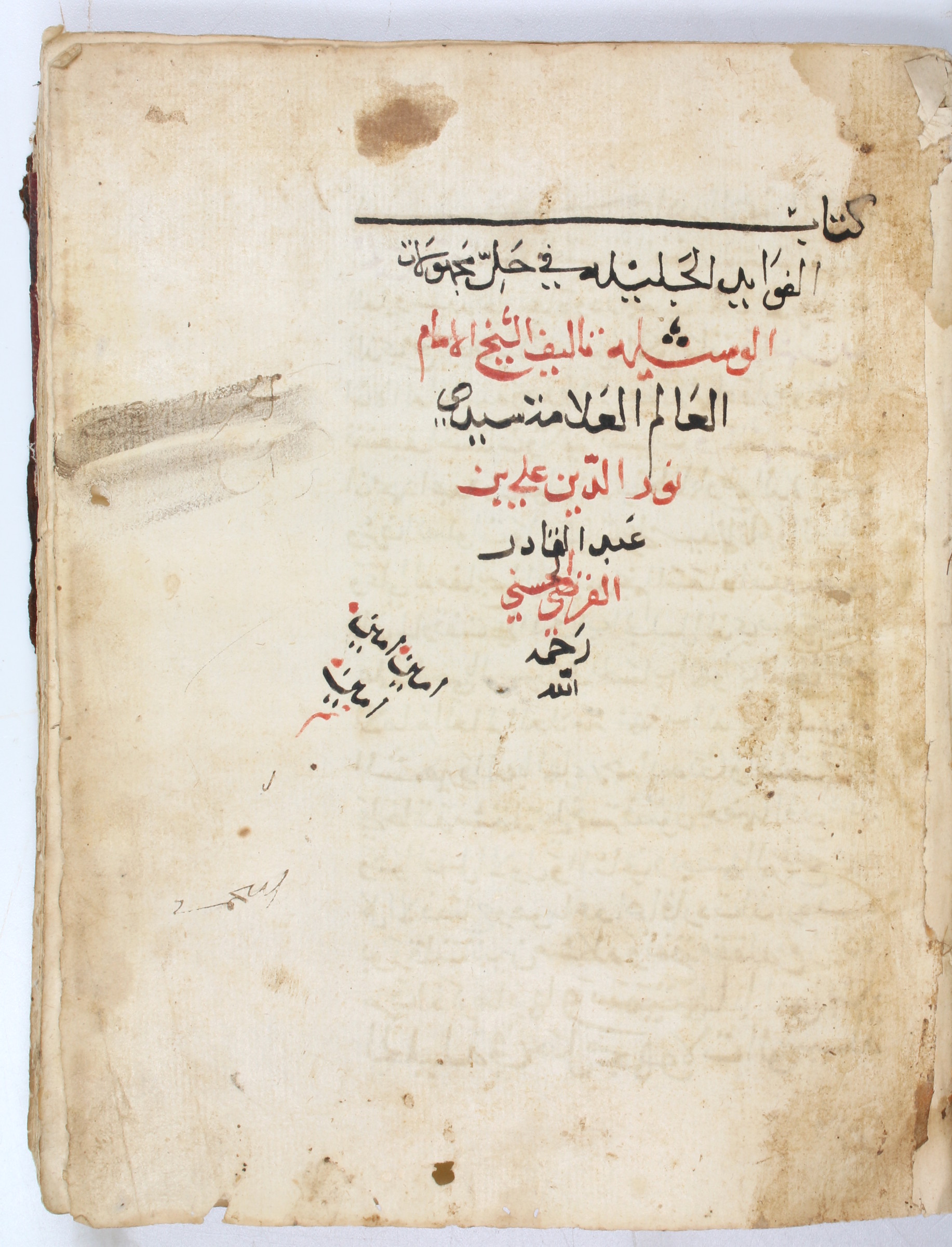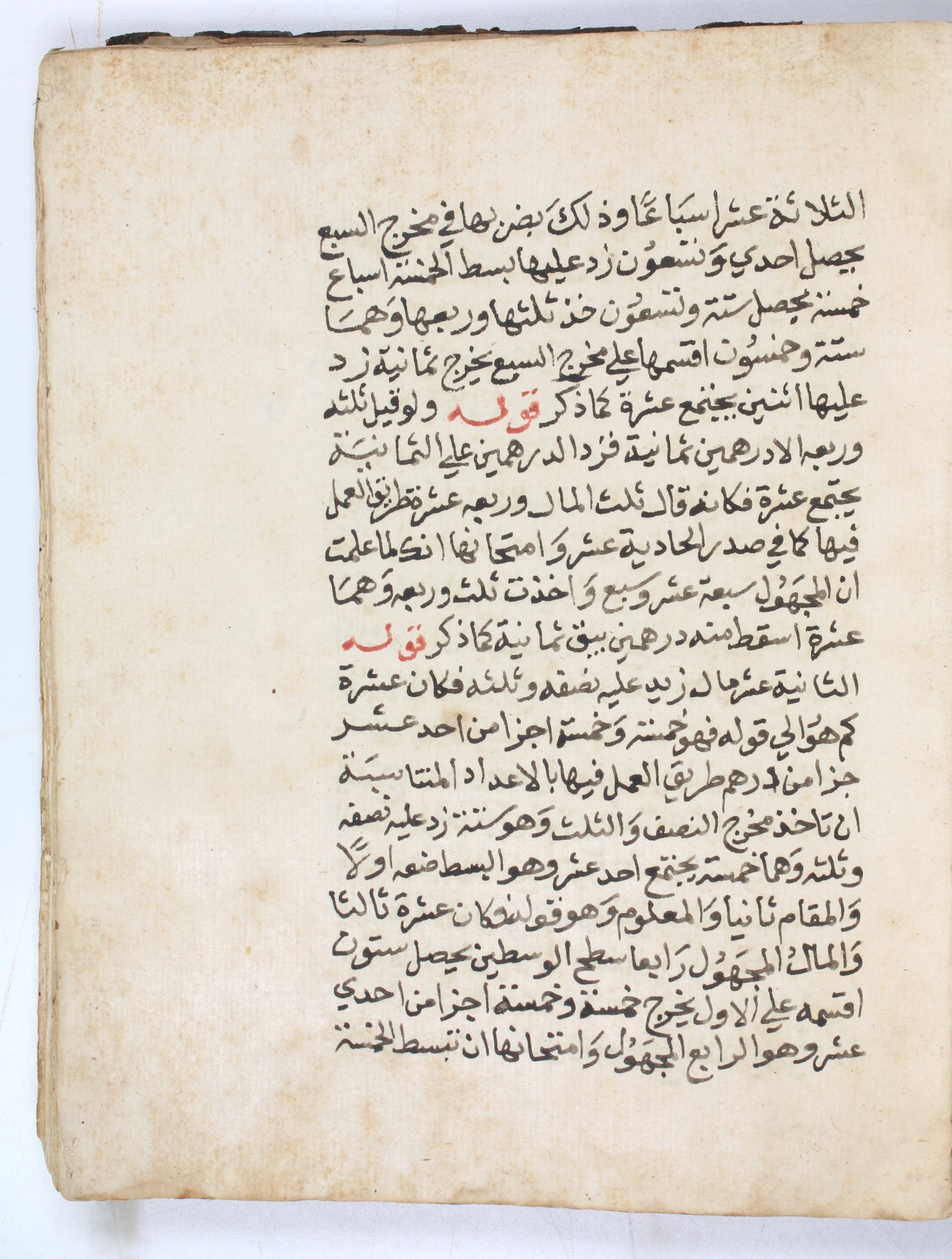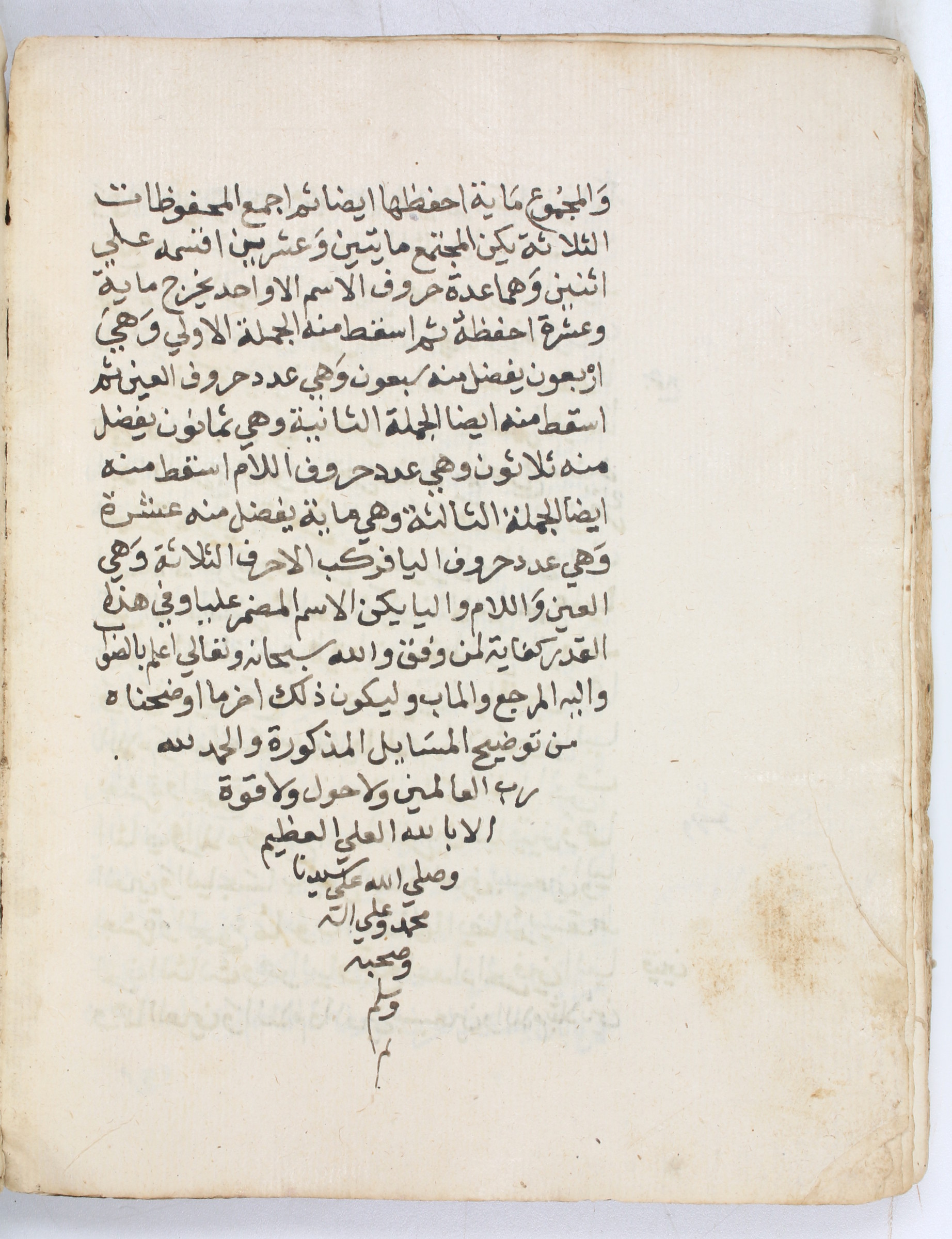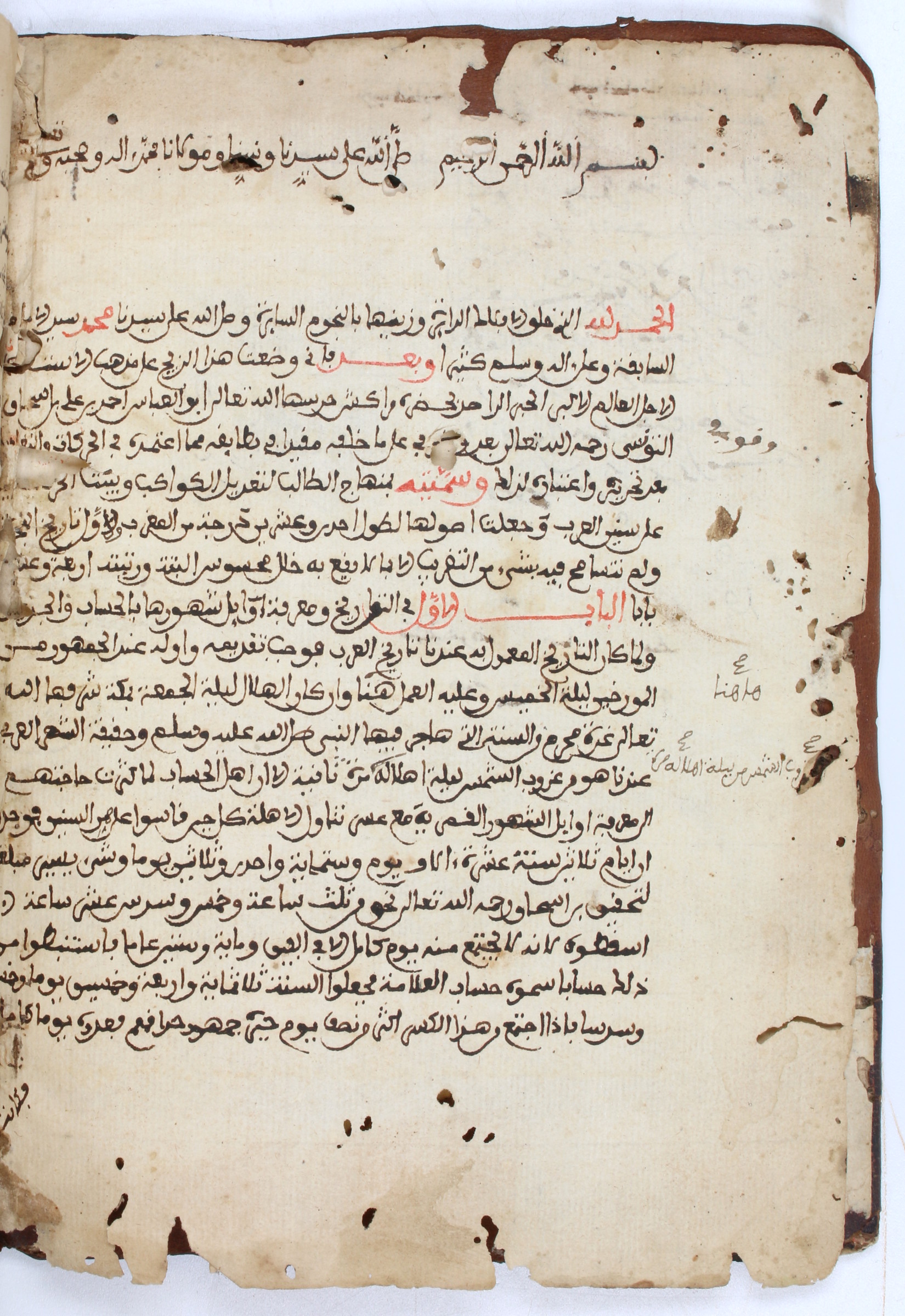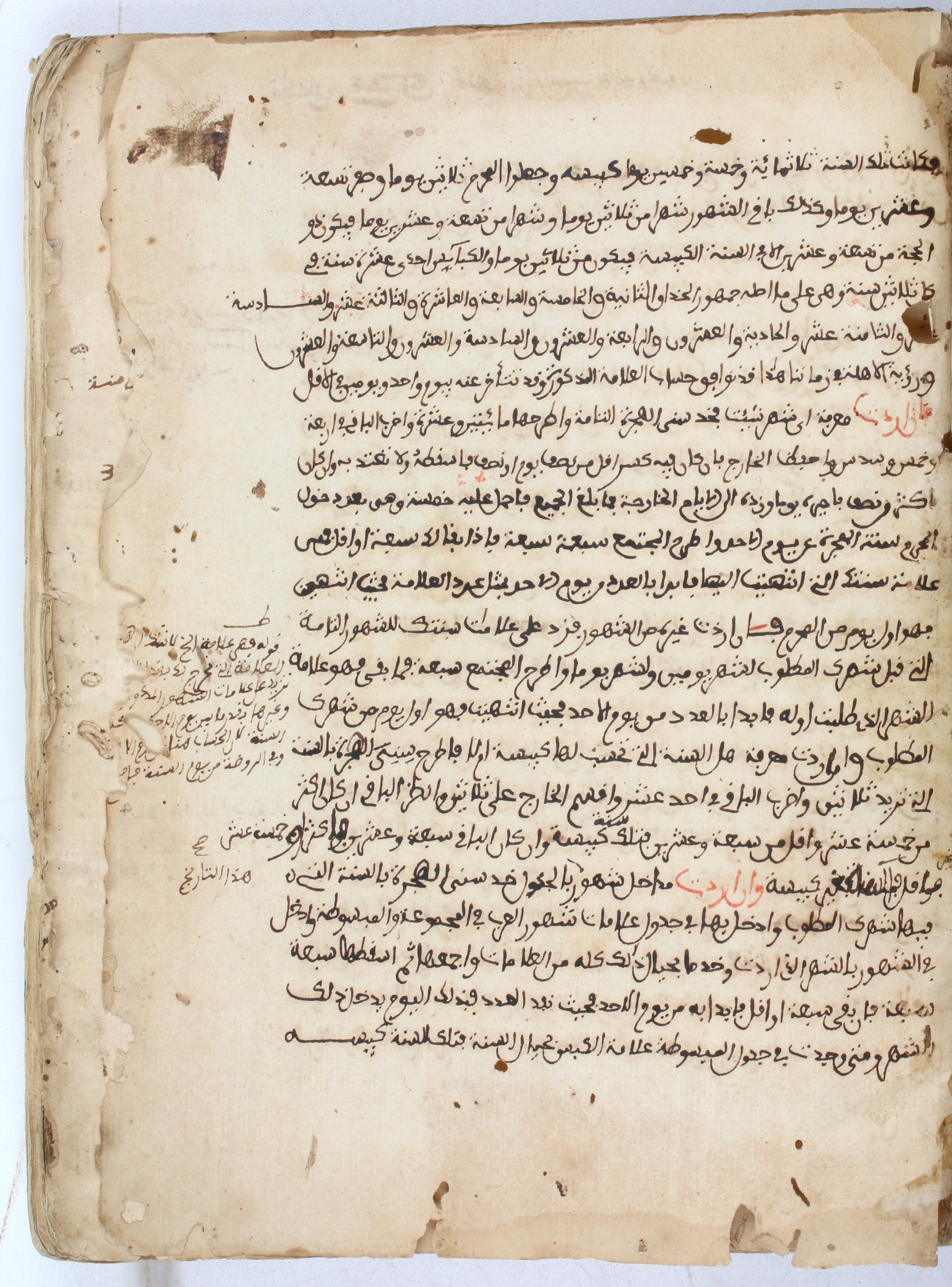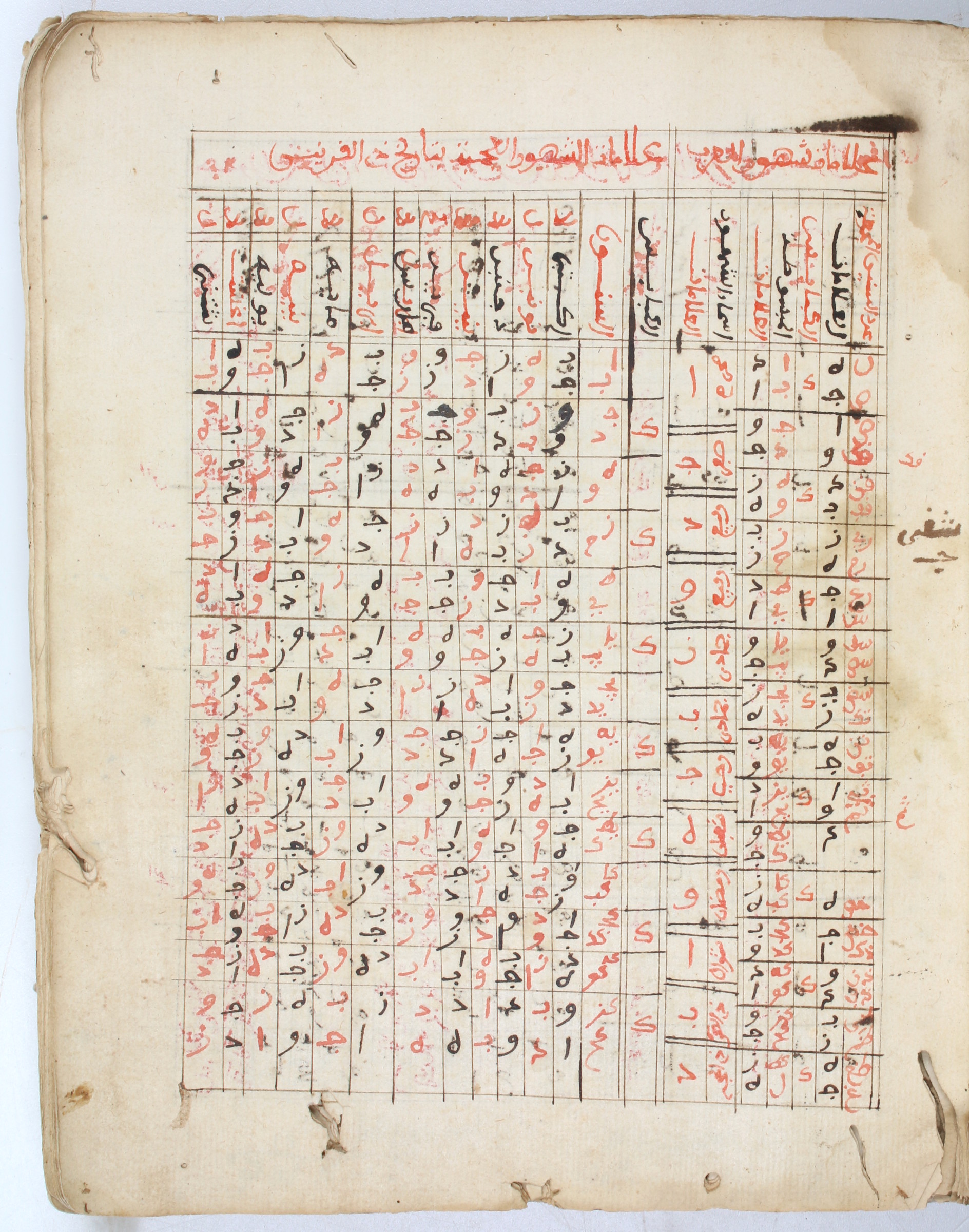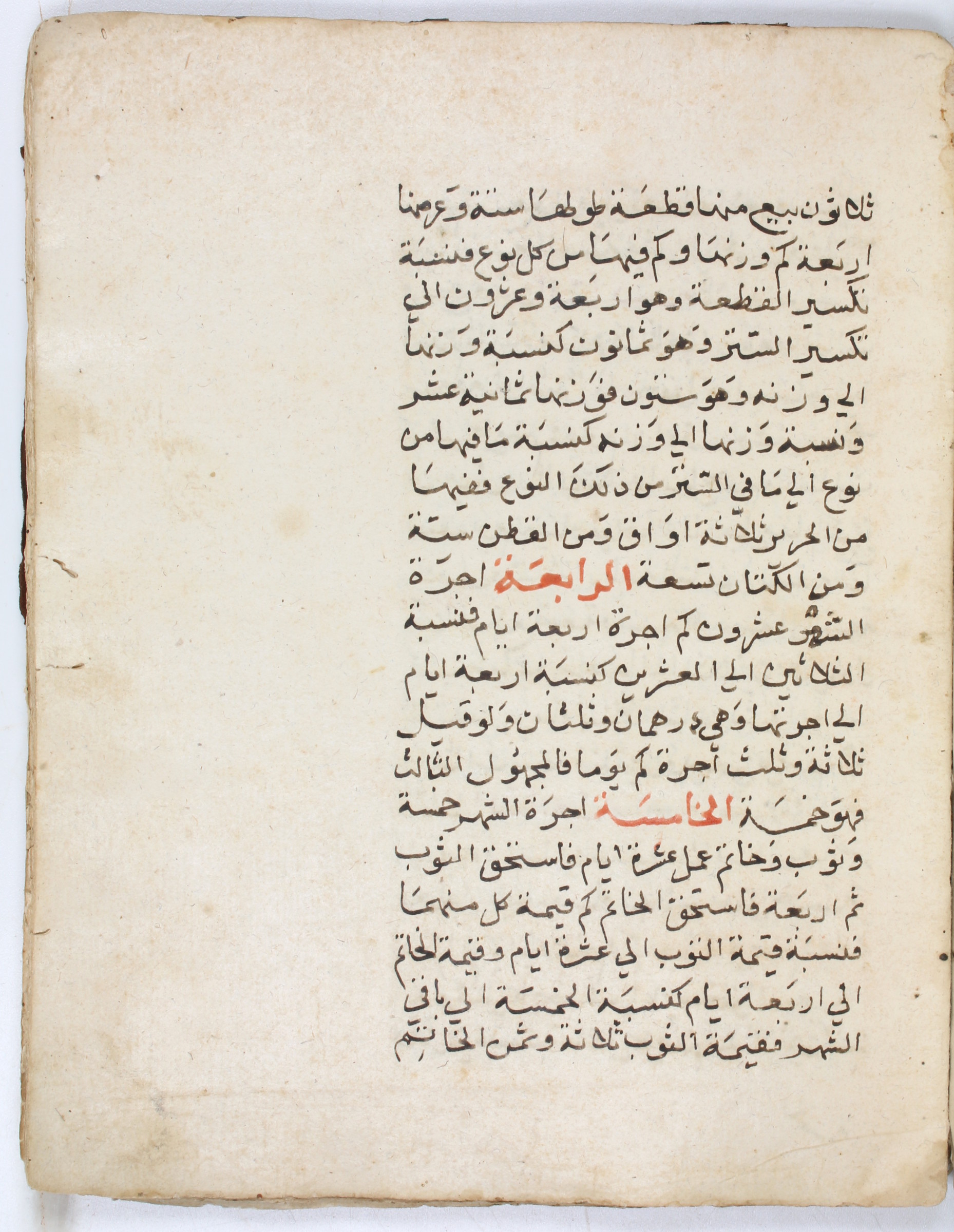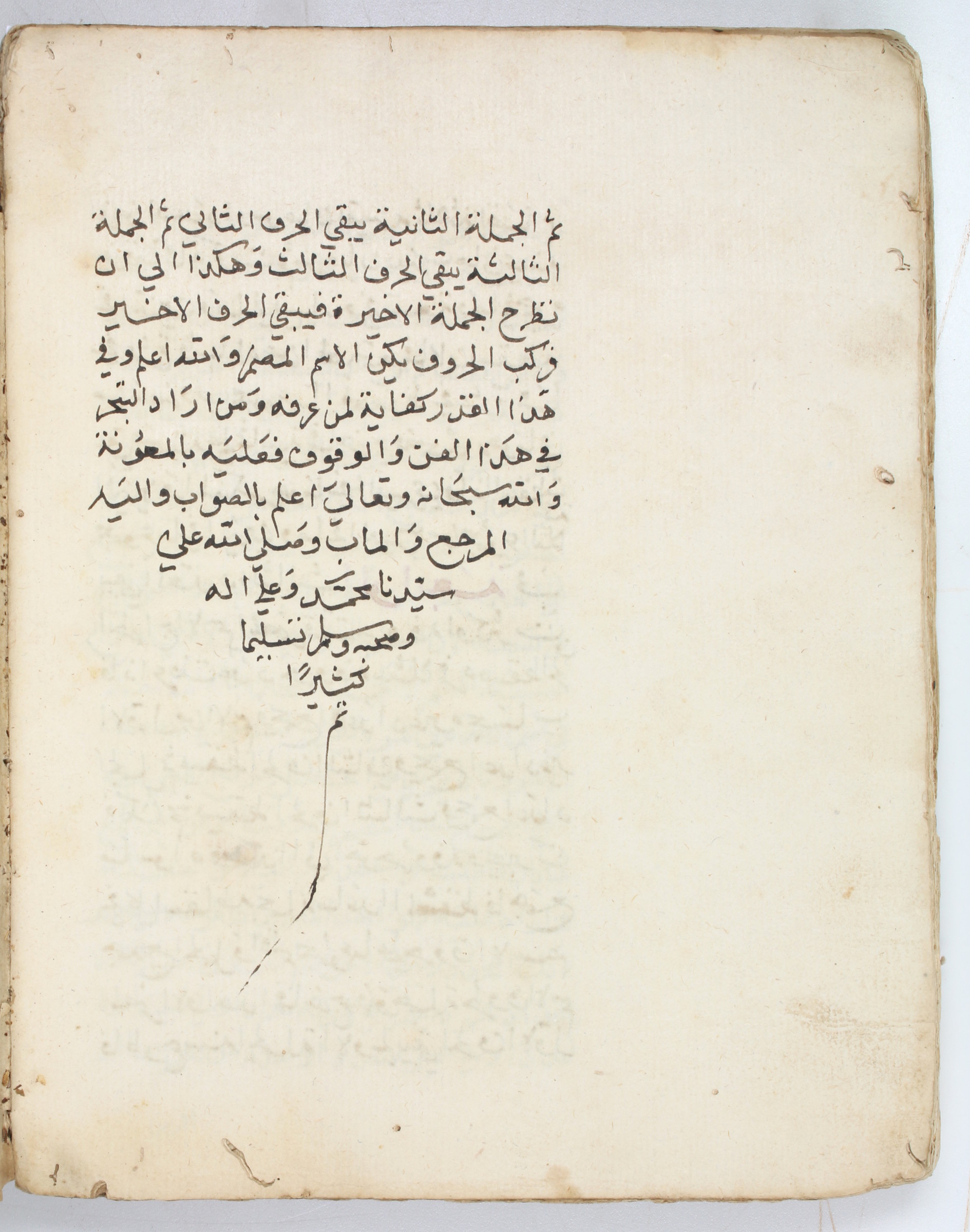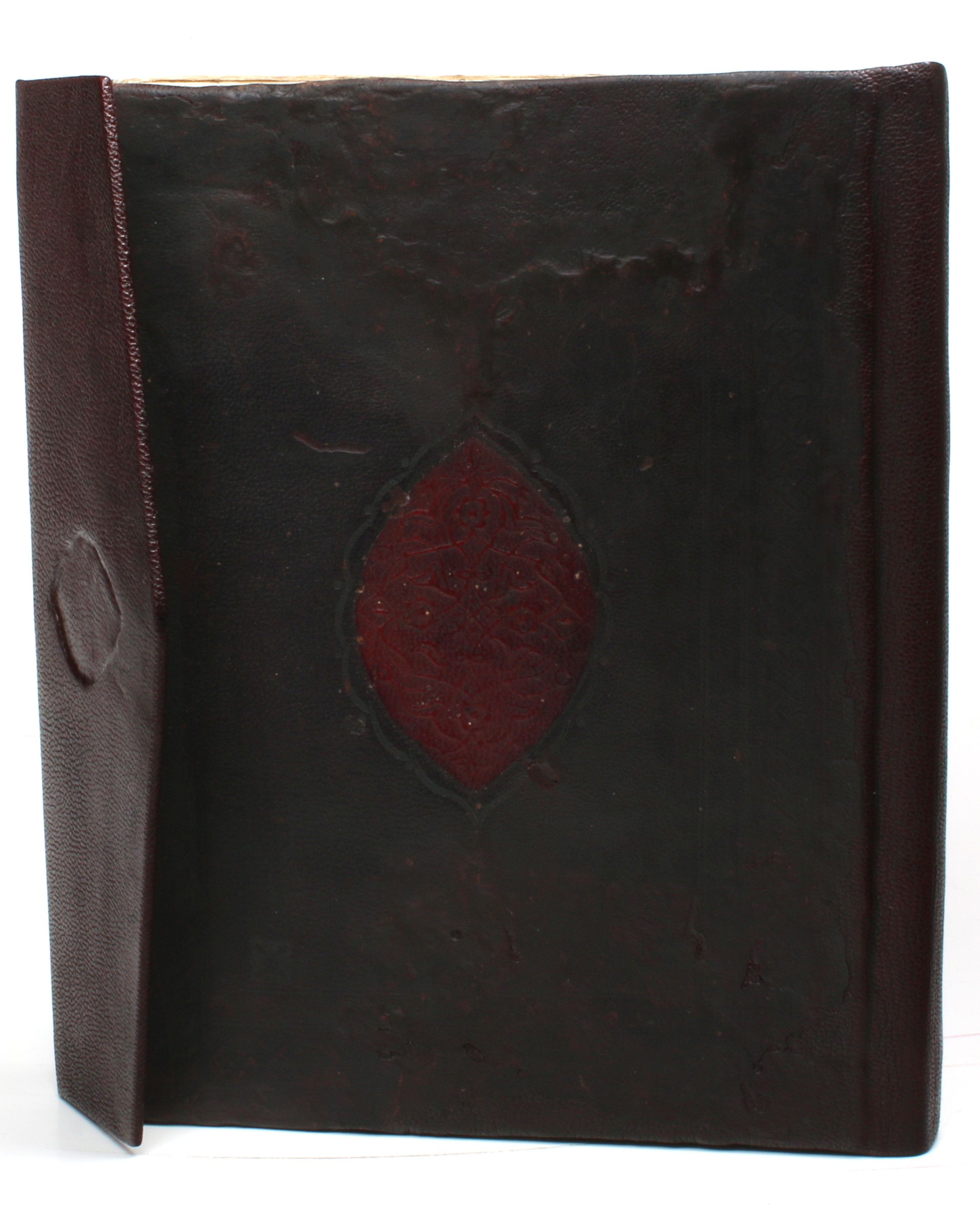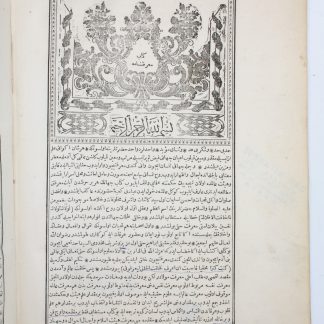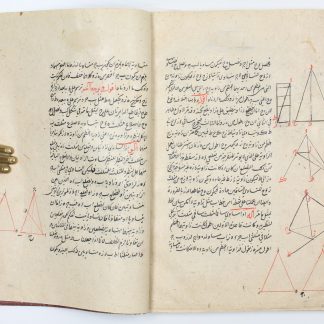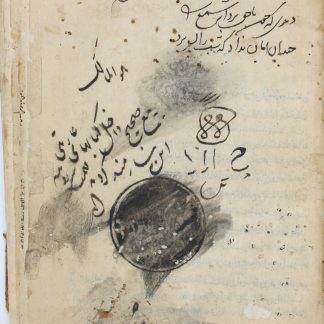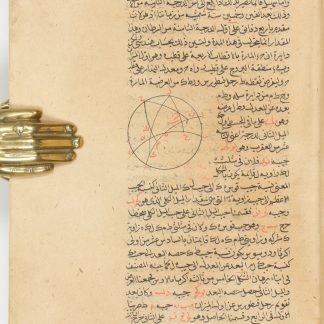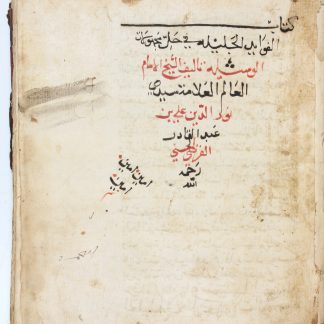Arabic manuscript compilation on astronomy, chronology, mathematics, and the brain
Kitab Minhaj al-talib li-ta'dil al-kawakib.
4to (160 x 202 mm). Arabic manuscript on watermarked paper, 27 pp. plus 57 pp. of tables, 22 lines per extensum, written in black Maghribi script, emphases and section titles in red; extensive tables at the end.
(Bound with) II: Nour al-Din 'Ali bin Abd al-Qadir al-Fardi al-Hasani. Kitab al-Fawa'id al-jalilah fi fi hall majhulat al-wasila. Near East, 18th century CE. Arabic manuscript on watermarked paper, 98 pp., 19 lines per extensum, black naskh with emphases in red.
(Bound with) III: Brain manuscript. Near East, 18th century CE. Arabic manuscript on watermarked paper, 25 pp., 19 lines per extensum, written in black naskh with emphases in red.
All bound together in oriental brown leather with fore-edge flap, a central oval medallion and stamped borders.
€ 35.000,00
A collection of three different Arabic treatises bound in one volume, dealing with astronomy, keeping time and mathematics, as well as psychology, written in Northern Africa and Near East.
Bound first is the "Kitab Minhaj al-talib li-ta'dil al-kawakib" by the Marrakesh-born mathematician, astronomer, and Sufi scholar Ibn al-Banna' (also known as Abu'l-Abbas Ahmad ibn Muhammad ibn Uthman al-Azdi, 1251-1321). A long treatise about astronomy, the movements of the planets, and calculating the times of prayer according to location, it was published by Juan Vernet Ginés in 1952.
The "Kitab al-Fawa'id" by the mathematician Nouraddin ‘Ali al-Faradi (d. 870 H / 1465/66 CE) is a commentary on the "Kitab al-wasila fi 'ilm al-hisab" by the Egyptian mathematician Ibn al-Ha'im al-Misri (d. 1412). A copy is stored in the Al-Azhar Library, Cairo (shelfmark 4374).
At the end is a shorter text containing two sections (fasl 4 and fasl 5) excerpted from a treatise on the power of the human brain and how to exercise it.
The treatise of Ibn al-Banna' shows some edge damage from worming and old repairs, otherwise internally quite sound. Binding professionally restored; modern spine and flap hinge. Provenance: from the private collection of the English art dealer Oliver Hoare (1945-2018), who launched the Islamic Art Department at Christie's.
I: GAL II, 331, 5.
II: Cf. GAL S II, 1024, 77.

